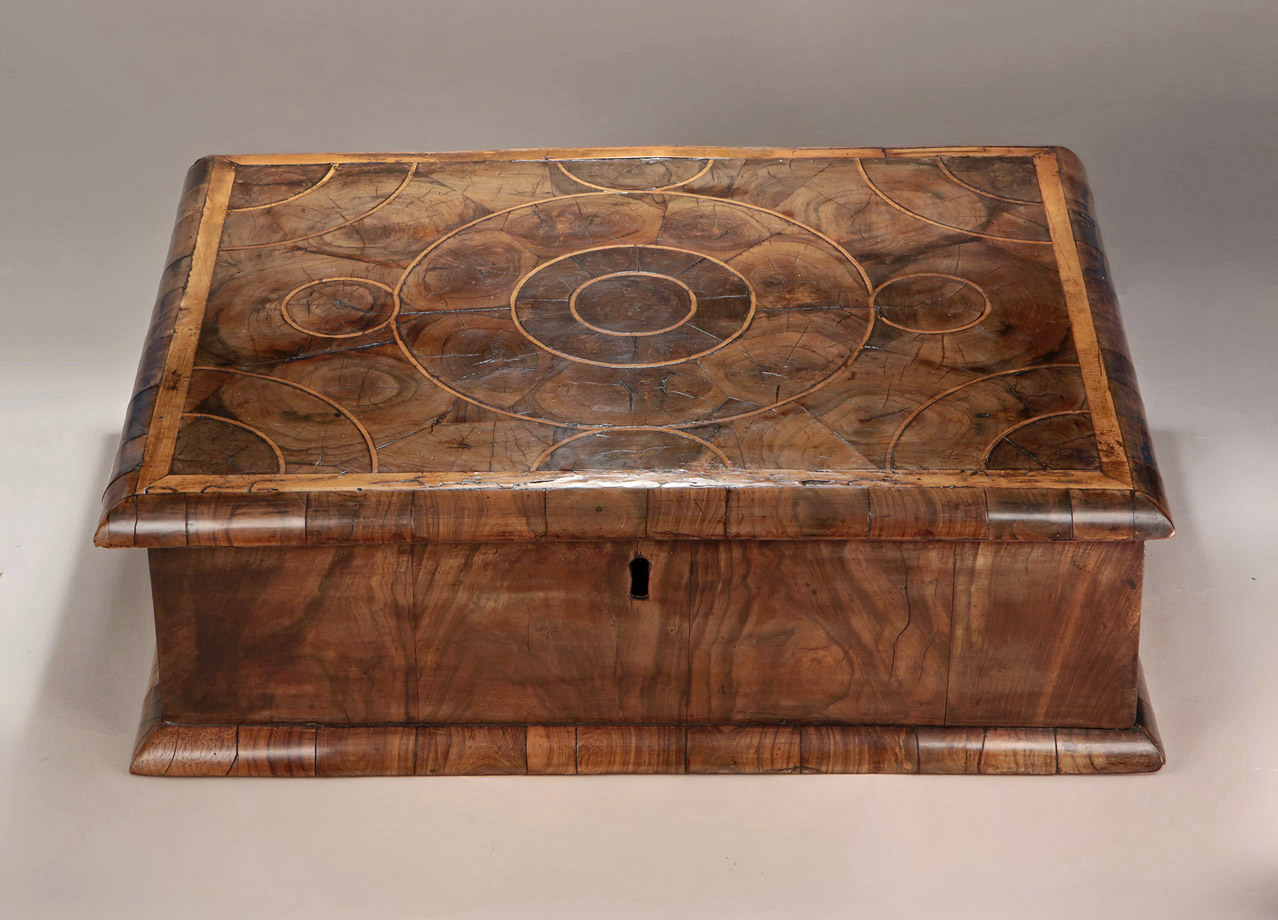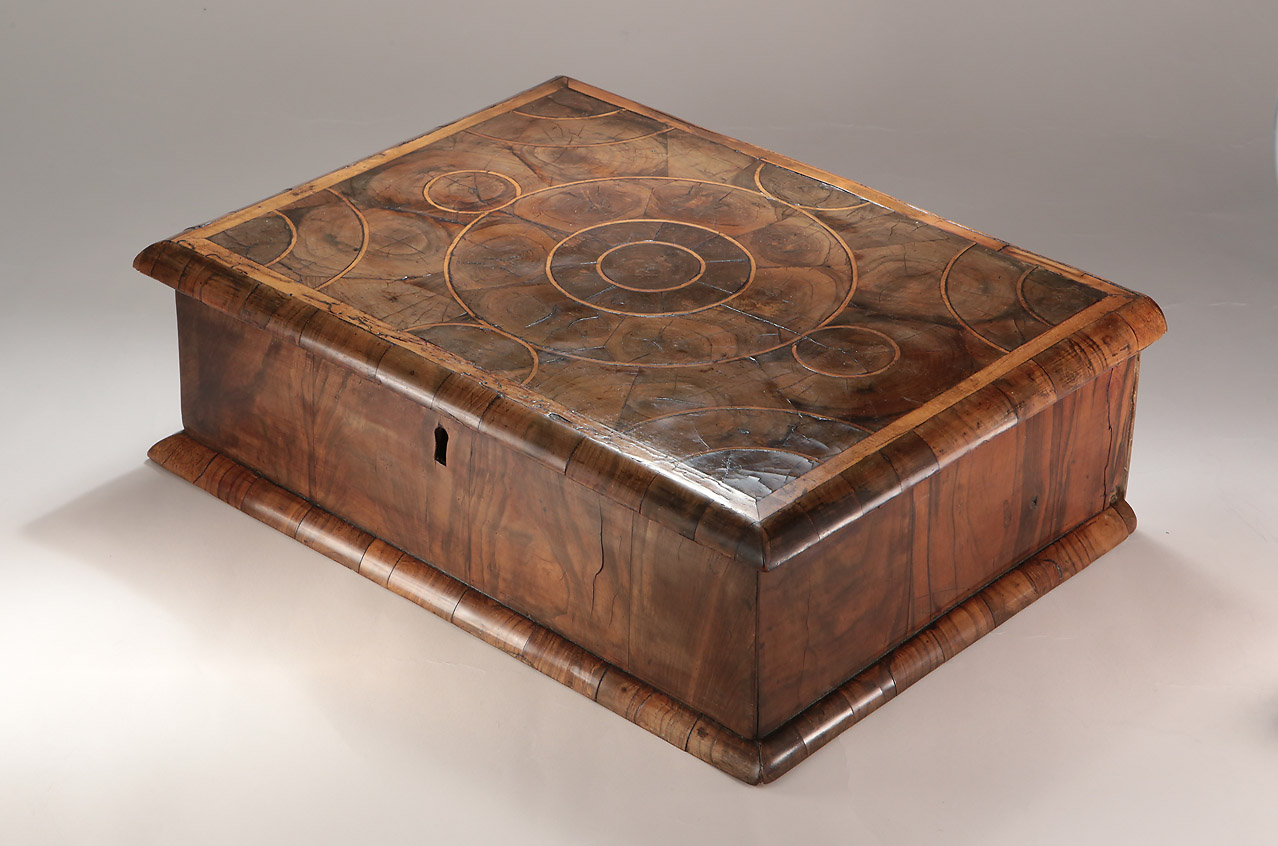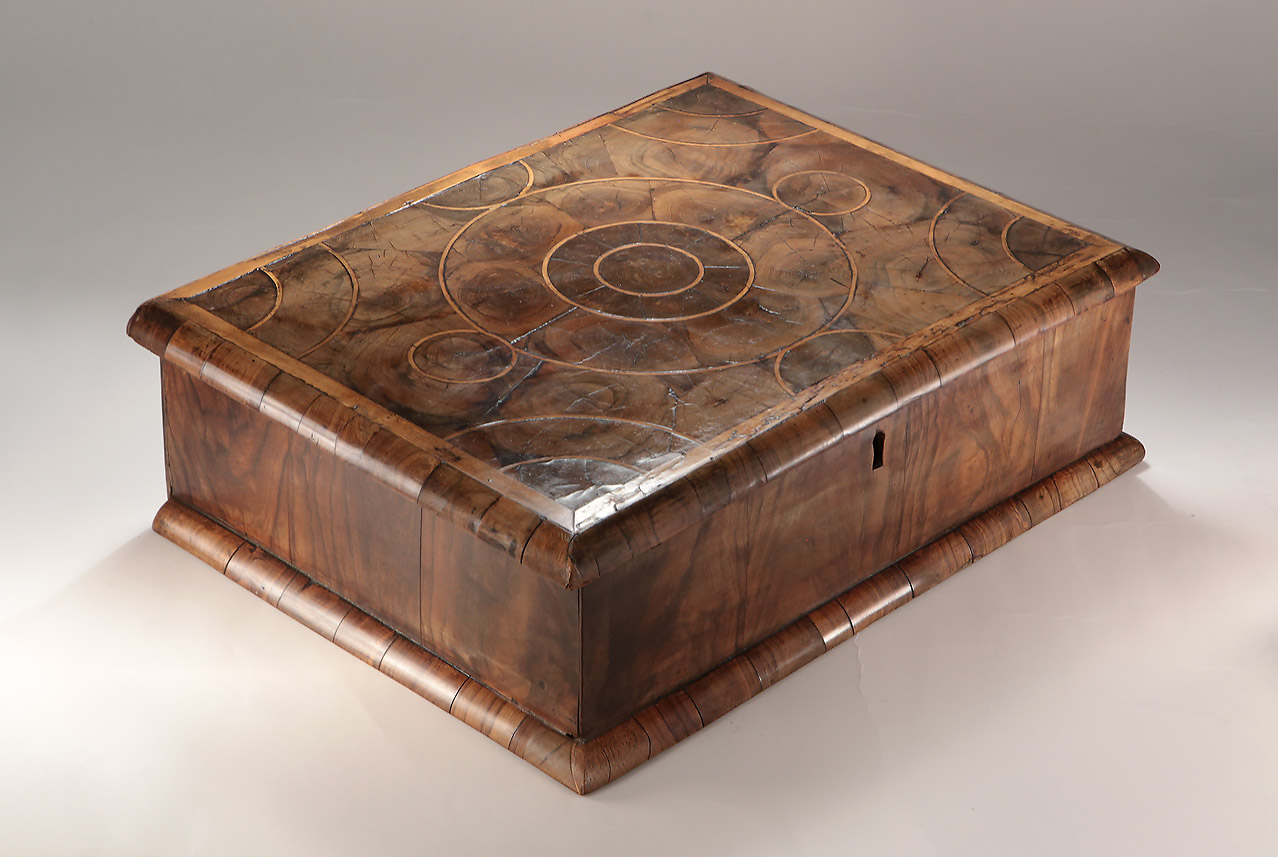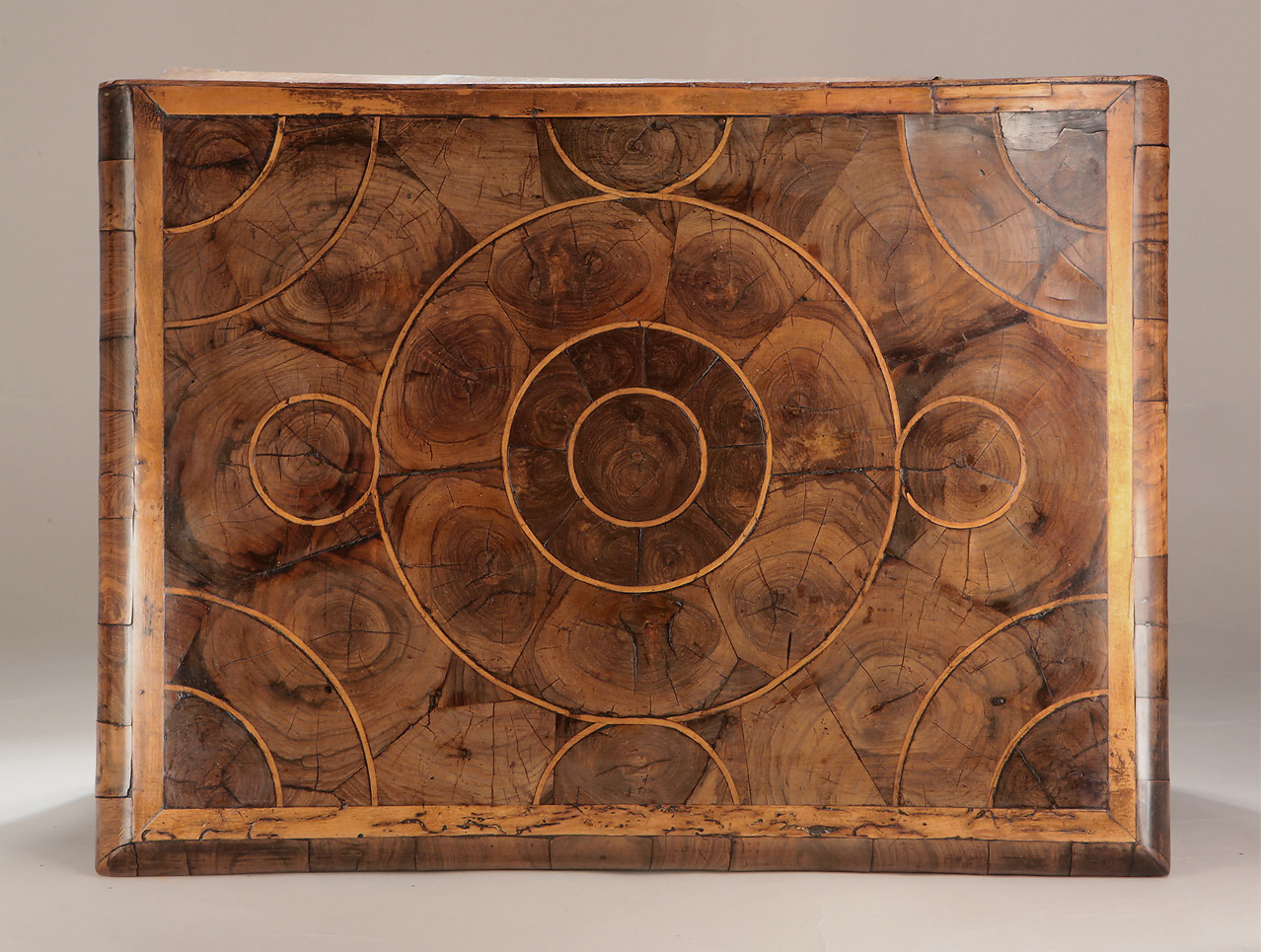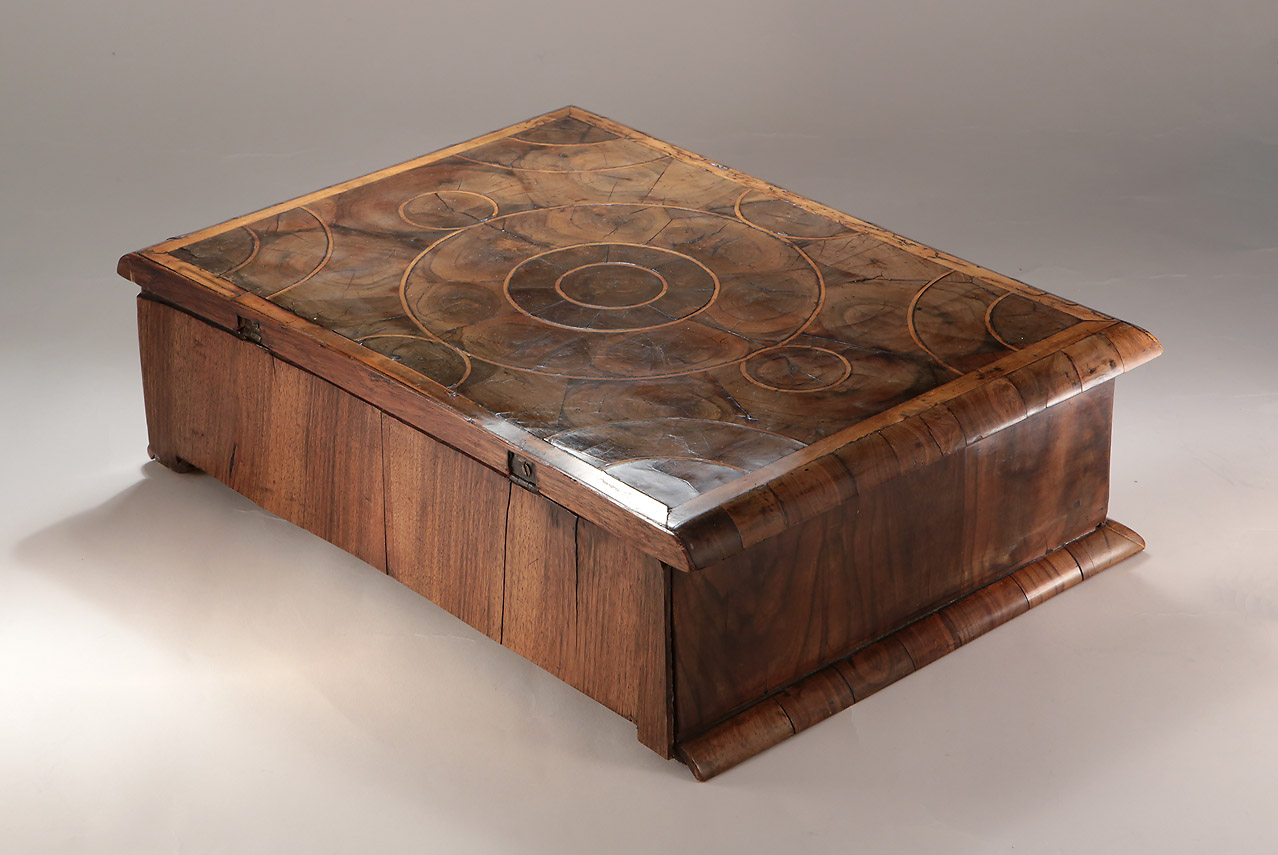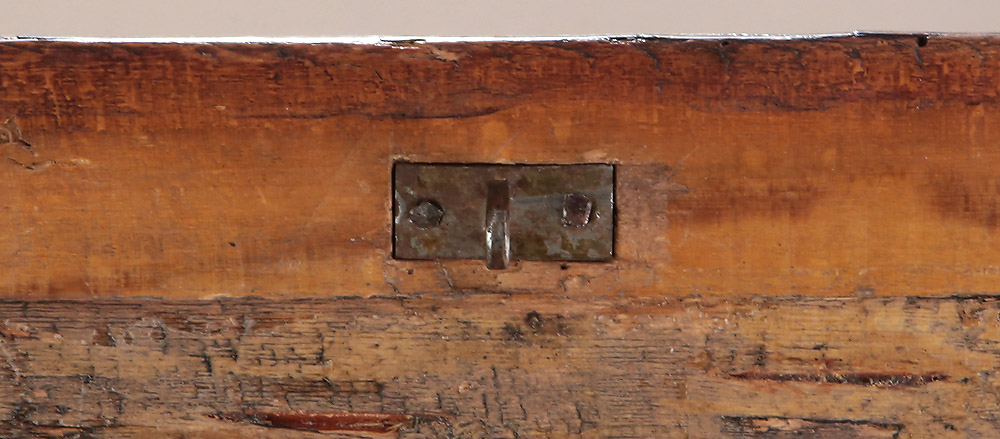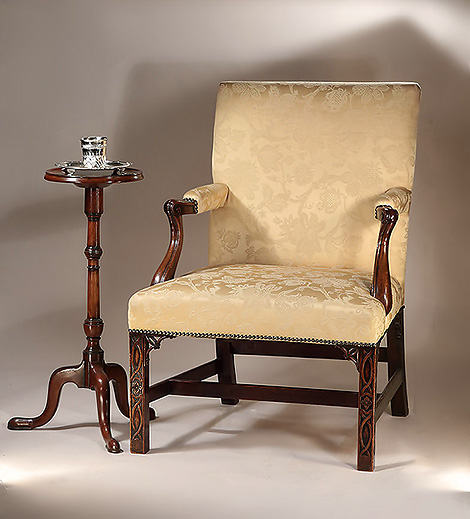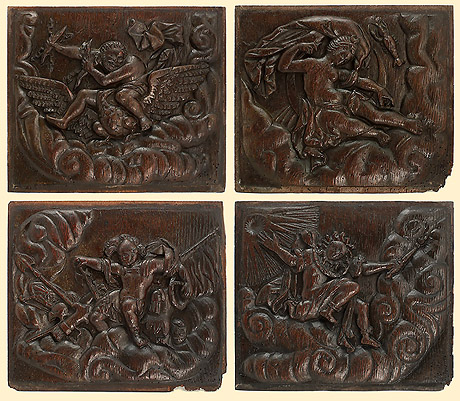|
The deep rectangular box retaining its original sun-faded and patinated surfaces,
having a hinged cover of 'oyster veneer' and circular inlaid boxwood marquetry and banding,
above a highly figured walnut frieze, and opening to an unlined interior;
with the original iron hinges and lock
Condition : Excellent, with desirable early surface retaining areas of sun fading;
without the usual shrinkage crack to the cover top
15.25" x 11.25" x 4.75"
SOLD
#7406
Please Inquire
'Oyster Veneering' of 17th and Early 18th Century Furniture :
'Oyster veneering' refers to the use of small diameter limbs, in thin either transverse or oblique cuts,
and arranging into geometric forms to create a decorative surface.
These smaller limbs provided an economical method of using otherwise quite expensive timbers.
The most common woods used were cocus, princeswood, or with transverse cuts only, walnut and olive.
Although laburnum is frequently listed in oyster veneering,
most examples examined have been found to be one of the aforementioned timbers.
Oyster veneering was frequently combined with stringing, and marquetry in circular or oval arrangements,
creating a further pattern of light and dark surfaces.
Today it is not uncommon to find older plain oak chests re-veneered by" oystering",
thereby sold for a much greater sum.
In such cases, the surfaces will be smooth and regular,
not showing the irregularities, 'cupping' and shrinkage that tale place with natural aging of a few hundred years.
|
